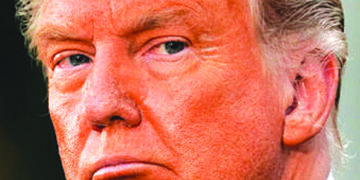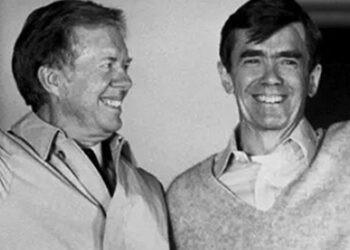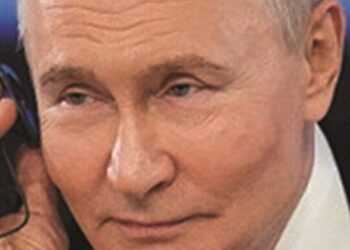October 08, 2021
by Warren L. Nelson

With massive imports of foreign-made vaccines, the Raisi Administration has launched a stunning vaccination campaign that has now reached beyond half of the population.
As of October 10, the government reported having administered 64,401,945 shots, including 45,075,313, first shots, indicating it has reached about 53 percent of Iran’s population of 85 million.
That’s an average of just a little over 1 million jabs a day in the last 30 days.
The US Centers for Disease Control and Prevention (CDC) publishes a daily tabulation of shots per million population given in the previous week by 212 jurisdictions around the world, as reported by those jurisdictions. As of September 24, Iran ranked 11th, though many of those above Iran were tiny, like St. Helena, Niue and Kiribati. Of the significant countries above Iran, Cuba was ranked first in the world, Cambodia third, Costa Rica eighth and Australia 10th.
So, Iran’s vaccination progress, as shown in the daily figures being published, has become very impressive that is, if you believe the numbers. There were many doubts expressed on social media as people reported going to a vaccination center only to find it closed because it had run out of vaccine.
The reported massive surge in vaccinations is due primarily to a decision by the Raisi Administration to start importing all the foreign vaccines it could get its hands on. Imports jumped from 31 million doses as of September 4 to 80 million as of October 4.
Talk of US sanctions preventing Iran from importing vaccines largely disappeared as officials admitted that the regime had wanted to rely primarily on Iranian-made vaccines but the promised volumes of those have not materialized as manufacturing plants have not been able to come anywhere near the huge numbers promised. So, Iran is importing with no constraints from sanctions.
Back on September 12, Hassan Abol-Qasemi, president of Baqiatollah Medical University, which is owned by the Pasdaran, said there was little chance to mass produce the vaccine developed by the university because it does not have the funds to launch production. In fact, he said, Iran lacks the capacity to mass produce any of the vaccines its scientists have been developing.
The sole vaccine Iran says is in actual production is the COV-Iran Barekat vaccine. Its manufacturer only announced the start-up of a second production line September 12. It said that as of that date, it had delivered only 5.2 million doses to the Health Ministry. The Health Ministry said that at that point 10 percent of vaccinations had used the domestic dose, a percentage that would now be lower given the surge in imports.
The bulk of the vaccines Iran has been able to get has been the Chinese Sinopharm, which also costs more than double what some other vaccines costs. According to an announcement by the Customs Administration, each Sinopharm dose costs $9.20, which is cheaper than Russia’s Sputnik V at $10 a dose and India’s Bharat at $14.50, but much more expensive than the $4 Iran has paid for AstraZeneca made in Japan and Covax made in Italy and South Korea.
A former health minister says the decision to shift the emphasis from domestic to imported vaccines was made by then-President Hassan Rohani many months ago, not just recently by the Raisi Administration. Masud Pezeshkian, a Reformist Majlis deputy and health minister in the cabinet of President Mohammad Khatami, said September 14 that all the vaccines imported up to that date had been ordered by the Rohani Administration. However, a number of Iranian media outlets quoted the head of the Red Crescent Society as saying the huge surge in vaccine imports was “the result of a telephone conversation between Ayatollah Raisi and the president of China.”
Most importantly, the scale of the epidemic is receding rapidly, as shown in the accompanying charts. The number of new covid cases reported daily peaked at 50,228 on August 17 and has since fallen to just under 10,000. However, the daily case total rarely topped 10,000 until April, so the scale of the epidemic is still quite high.
As for the number of daily deaths reported, it hit a high of 709 on August 24, and has been below 300 since September 24. As the chart on daily deaths shows, Iran is now coming out of its fifth surge of the disease. The time between peaks has been four months, four months, five months and four months. Medical professionals are warning that the disease could surge again this winter. The Raisi Administration is hoping to prevent that with its major emphasis on vaccinations.
The epidemic is still out of control in the western provinces of West Azerbaijan, Kurdistan and Kermanshah. As of October 4, just 16 cities were categorized as “red,” meaning the disease was out of control. All those red cities are in the three western provinces.
No one believes the numbers on deaths and cases are complete. But that is true for every country in the world. The published numbers are almost certainly low. The unanswered question is how low. Most likely, the number of covid deaths in Iran is more than double the published number. That is based on the following reasoning. The total number of deaths from covid topped 120,000 at the end of summer. But the National Organization for Civil Registration reported that the number of deaths reported to it from the start of the epidemic through the end of summer was 257,000 above the historic norm. Not all those “excess deaths” are likely caused by covid but most of them are probably a result of the epidemic.
As the vaccination effort is ramped up, the social distancing effort is fading away. For example, on September 19, museums that have been closed 14 months re-opened. Museums in all but the 16 cities still coded red were allowed to open their doors.
Raisi loudly pushed the medical authorities to authorize vaccinations for those as young as 12 as he sought to get schools Iran back to normal with face-to-face classes. The age at which vaccinations will be given was dropped to 12 on September 19.
The next big initiative the National Coronavirus Headquarters is working on is what in the West is called a vaccination passport a document that fully vaccinated persons carry to show they are fully vaccinated. The government can then deny benefits to the unvaccinated—for example, by requiring a vaccine passport to gain entry to a restaurant, movie theater, store, et cetera. That coercion is intended to push the hesitant to get the shots.
The National Coronavirus Headquarters says it is planning such an initiative in the next few weeks.
The Coronavirus Headquarters calls this a “smart quarantine,” explaining that it will no longer order businesses to shut down en masse, but instead restrict only those people who have not been vaccinated.
The Headquarters also said it will order the unvaccinated to stay home and use the police to enforce that rule. It said everyone vaccinated has been registered along with his or her auto license number. Thus, when a car owned by an unvaccinated person passes a police camera, that driver will be tracked down and fined or so the plan says.
The Health Ministry has its own ideas. It said September 19 that it will push up the vaccination totals by sending health workers door-to-door to vaccinate people who signed up to be vaccinated but failed to show up for their appointments. It hasn’t yet launched such a program.
As mentioned above, the government has largely halted its claim that sanctions stop it from importing vaccines as it announces huge new numbers of foreign vaccines arriving in Iran. But that hasn’t stopped it from telling the world how bad the American sanctions are. On October 1, an Iranian delegate told a UN committee, “Inhumane, illegal and unilateral coercive measures deprive the Islamic Republic of access to Covid-19 vaccines. It is unfortunate that some countries arrogantly claim that humanitarian goods are exempt from sanctions. This is a terrible lie,” he said as the govermment told the Iranian public that vaccines were pouring into the country.
Two days later, the Central Bank of Iran announced it had allocated $1.5 billion for importing Covid-19 vaccines. That would pay for 158,000 of the expensive Sinopharm doses or enough to fully vaccinate 79 million of the 85 million Iranians, well above the declared goal of vaccinating 70 million citizens to reach herd immunity.
The dramatic drop in the scale of new cases, doesn’t mean the epidemic is over, but it has brought some relief to doctors and nurses who have been stretched to the end of their endurance by the volume of patients and the shortage of beds, equipment and medications. There are still many reports of exhausted medical staff working multiple shifts, but the pressure is nowhere near as bad as when daily new cases, now under 10,000, were above 30,000, as they were from mid-July to early September.
Meanwhile, there were many more examples of confused and inept execution of regime efforts to tackle the dangers of the epidemic. One came September 12, when the Coronavirus Headquarters decided to end the 10 p.m. curfew on cars being on the road in Tehran. A public announcement was made and carried by radio and television saying the curfew had ended that night. Cars suddenly started appearing in large numbers. And the police started ticketing every vehicle they could stop. The deputy chief of the traffic police said no one had told him about the change, even though it was all over radio and TV. He said, “Police act based on official communications; we will enforce a communication when we receive it.”
Then, in mid-September, Iran’s Food & Drug Administration announced it had approved the vaccines developed by the US firms Pfizer and Johnson & Johnson for use in Iran, although Supreme Leader Ali Khamenehi back in January forbade the import of any American or British vaccines, saying those countries might be trying to test their vaccines on Iranians. Later, he said the ban applied only to vaccines actually manufactured in those two countries. But no American-developed vaccines have been imported at all, as the strong anti-American attitudes of hard-liners seems to have prevailed as if banning US vaccines would hurt the United States.
Hardliners campaigned actively against the US vaccines. For example, the Fars news agency quoted Prof. Ali Karami, a biotechnology professor at the Pasdaran’s Baqiatollah University of Medical Sciences, saying the Pfizer vaccine contains a “group of genes” that could alter a recipient’s DNA. Fars commented that “would put the next generation at risk.”
In 2016, Karami told a conference that the Pentagon had invented a shot it planned to circulate in the Middle East that “has been tested and shown to reduce fundamentalism and religiosity in all who are inoculated by damaging what is called the God gene.”















